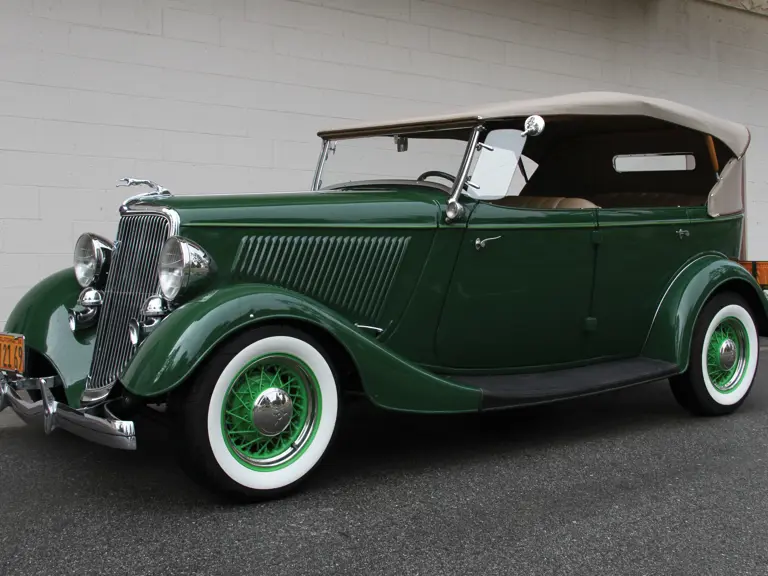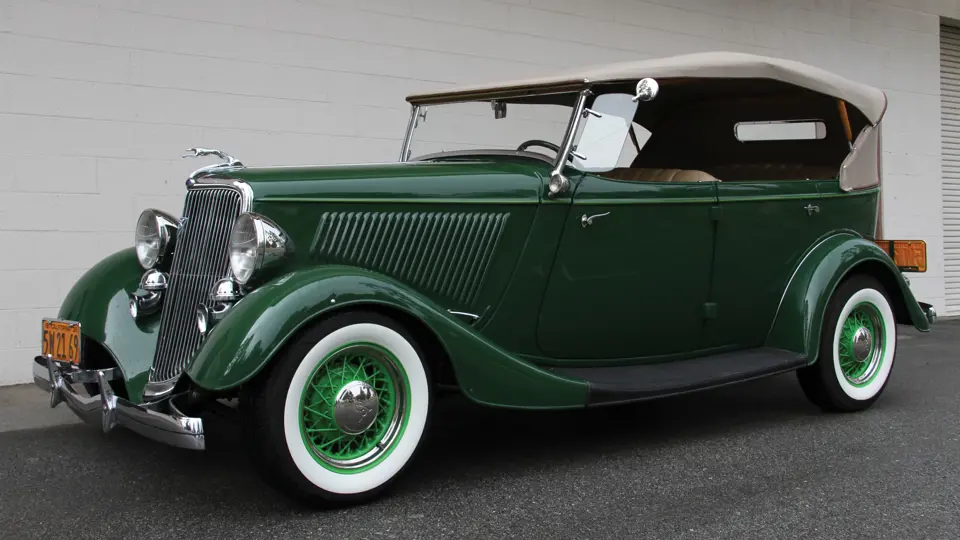Originally applied to close-coupled and luxuriously appointed carriages, the name “phaeton” derived from classical Greek mythology. During the 1920s, the name was picked up by a number of automobile manufacturers and applied to majestic open cars with dual cowls, dual windscreens, elaborate accoutrements and simple side curtains for weather protection.
However, in the mass market, high-volume manufacturers like Ford took notice of the image and mystique associated with the phaeton name. By the early 1930s, all-steel enclosed bodies were rapidly taking over the automobile market and the “touring car” name began to carry an image of low-cost impracticality that was increasingly difficult to sell. In response, Ford product planners seized upon the phaeton name to restore some allure to their open four-door cars. While the concept remained the same, Ford’s own revival of the phaeton name represented a paradigm shift that exuded an aura of class and style.
As offered in period, this Forest Green with Apple Green wheels and pinstripe 1934 Ford Phaeton has tan interior and runs with a stock 59A flathead V-8 engine and three-speed manual transmission. The Deluxe is distinguished from their Standard counterparts by its cowllight, twin horns and two taillights. The grille is crisp and sets the tone for the cars clean lines. This is an all-steel Ford body and the car rides on Wheel Vintiques bent-spoke wire wheels with whitewall tires. The Ford also has a new LeBaron Bonney top and the vendor also reports that the original Kelsey-Hayes bent-spoke wheels are also with the car. This represents a great opportunity for astute collectors and it will continue to exemplify the most desirable open Ford models of the 1930s.



 | Fort Lauderdale, Florida
| Fort Lauderdale, Florida


